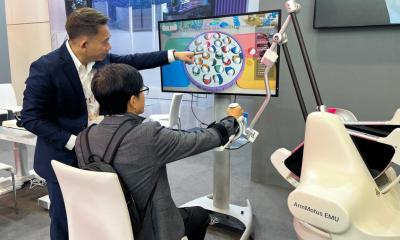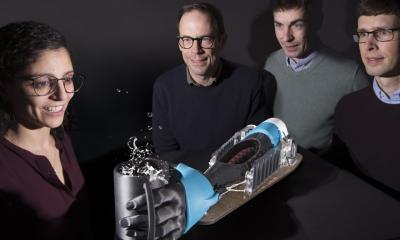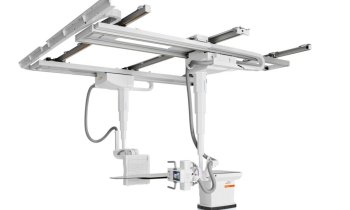Article • Evolving technology
Exosuits for human augmentation and assistance
Exosuits are adding a new dimension to rehabilitation and human augmentation options for people with limited movements after sustaining injury. High-tech sensors, actuators, controllers and soft textiles are advancing the possibilities of exosuits, with 3D printed components further enhancing the power and accuracy of the devices. The latest innovations were outlined by exosuit expert Professor Lorenzo Masia during a session at Medica 2022 in Düsseldorf.
Report: Mark Nicholls
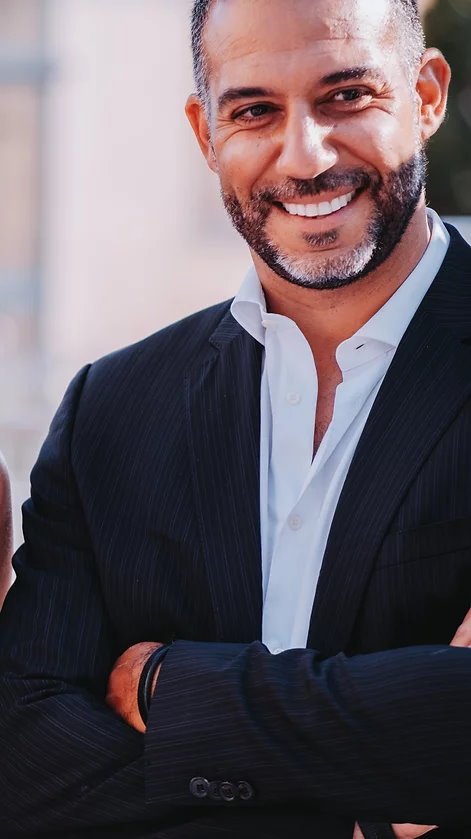
Image source: lorenzomasia.com
He explained how exosuit fittings, soft materials and evolving technologies with electrostimulation for upper and lower limbs are changing the perception of wearable assistive technology and human augmentation. Masia, who is Professor in Medical Technology and Biorobotics at the Faculty of Engineering Sciences of Heidelberg University in Germany and Deputy Director of the Institute of Computer Engineering, explained how exosuits are taking rehabilitation and human assistance to the next level with new and different technologies available to transform rigid exoskeletons into soft systems.
His ARIES (Assistive Robotics and Interactive Exosuits) laboratory at the University of Heidelberg is driving the shift from hard and inflexible devices to softer robotics, but with the two technologies complementing each other. ‘The exosuit is an exoskeleton composed of textiles equipped with sensors inside to provide motion via the detection of motion from the human user and transformation to mechanical,’ he said.
Personalised 3D printed components
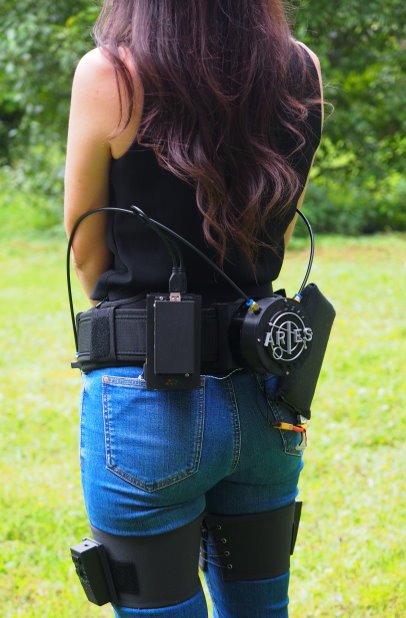
Masia’s lab works on upper and lower limb exosuits, and elements of sensors control and approaches to actuation, such as electromechanical actuation with electric motors that pull cables. As the exosuit wearer moves, the actuation of the system increases the force and grasp through detection of motion from flexible sensors as well as electromyography from muscles. Components can be accurately created through 3D printing that match the anthropometrics of the person, for example the length of their finger or width of their palm for efficient transmission.
Another system, he continued, has actuation and sensing embedded and works with simple voice control activated to open, close or move the user’s hand. The system provides benefits for people with spinal cord injury who retain some movement. ‘One person who was unable to grab a ball was able to do so with the exosuit glove and another was able to hold a toothbrush,’ Masia said. ‘It can change small activities in life for a person.’
Using their remaining muscular activity, users can trigger the exosuit’s assistance. ‘When they activate the exosuit, the residual capacity of motion is amplified and the person is able to move. We are not talking about complete rehabilitation, but about exercising or assist simple functional actions.’ However, he acknowledged this is not a solution for spinal injury patients without any residual motion capacity to activate the controller component.
Combining robotic assistance and muscle stimulation
The expert also explained how functional electrical stimulation with electromechanical assistance in hybrid assisted technology is supporting clinical rehabilitation. ‘We are able to extract a residual muscular activity and at the same time calculate the amplitude of the electrical stimulation, innervating the muscles with current, and synchronously coordinating the assistance from the exosuit,’ said Masia. ‘In this way, we exercise muscles and provide robotic assistance at the same time.
‘When the person attempts to move, the amount of residual capacity of motion is sent inside the controller, which calculates the amount of mechanical actuation to be sent inside the muscles, as well as the electrical stimulation to innervate the muscles. In this way you not only assist person in moving but activate the muscles and prevent muscle atrophy. With this kind of hybrid control we are able to perform many more movements without incurring muscular fatigue and allowing patients to exercise for longer.’

Getting ready for real-life setting with artificial intelligence
Masia also uses artificial intelligence (AI) embedded in exosuits for walking assistance. He acknowledged that exosuits for walking assistance work well on a treadmill, but have to compensate for the uneven surfaces of outdoor environments, such as ramps and steps. This is achieved through machine learning, which has been trained with motion data of a person not wearing an exosuit. Using this data programmed into the exosuit control and with use of a small camera, it identifies when a person climbs stairs, for example, and accordingly changes the assistance level provided by the exosuit.
The effectiveness of an exosuit system can be gauged by measuring reduction in metabolic oxygen consumption, which remains the gold standard of understanding if a wearable device works. Current methods using AI algorithms can result in significant oxygen savings when walking outdoors. Future developments include ramping up the capacity of the actuation, more research in textile engineering, and design development to transmit motion in a more efficient way, Masia concluded.
Profile:
Dr Lorenzo Masia is Full Professor in Biorobotics and Medical Technology at Heidelberg University in Germany at the Institute of Computer Engineering of the Faculty of Engineering Sciences. He also holds an affiliation with the University Medical Center Hamburg-Eppendorf where he collaborates with a specific focus on stroke rehabilitation. His research focuses on design and development of novel mechatronic devices for rehabilitation and implementation of control strategies for human robot interaction and assistive technology.
18.05.2023




